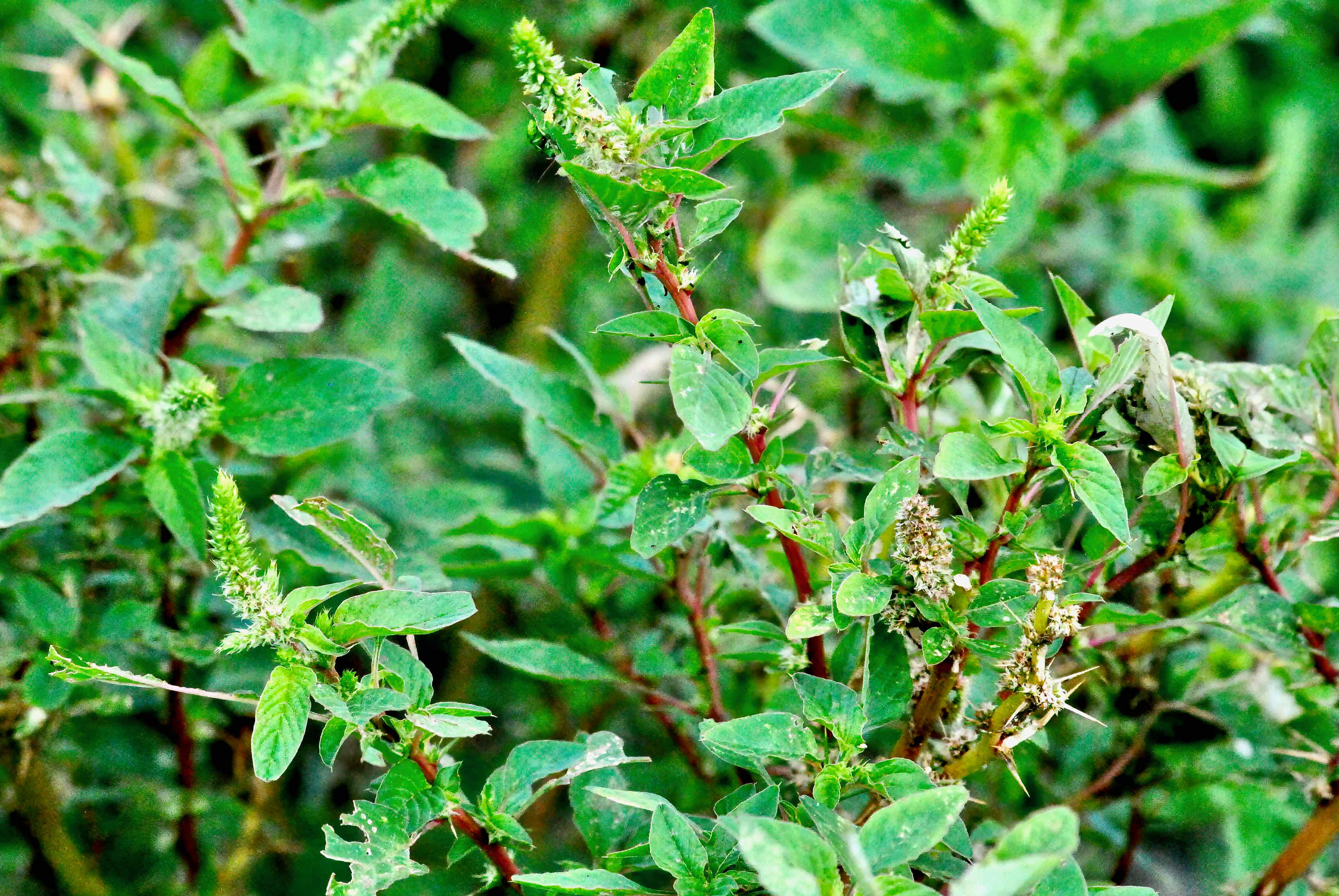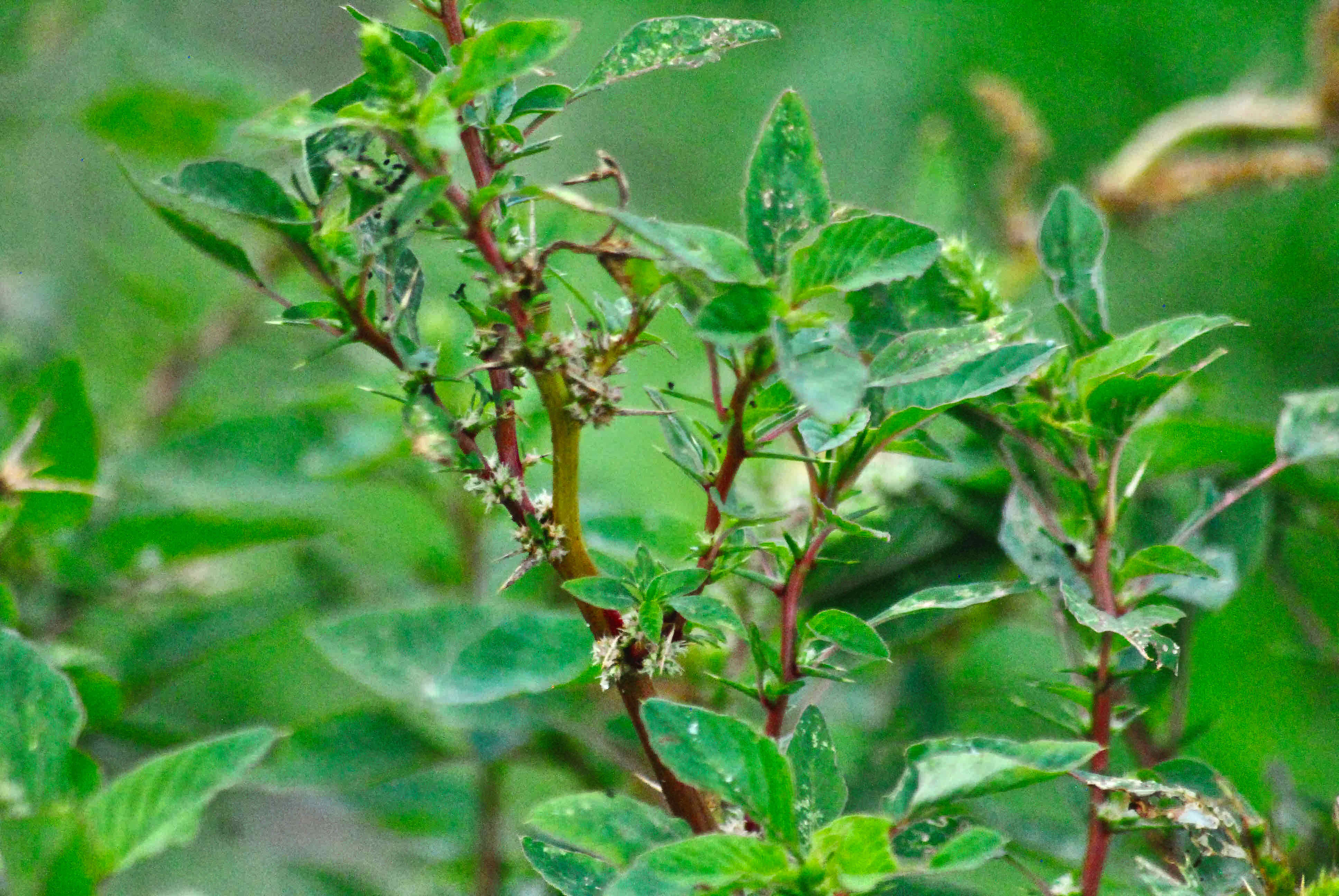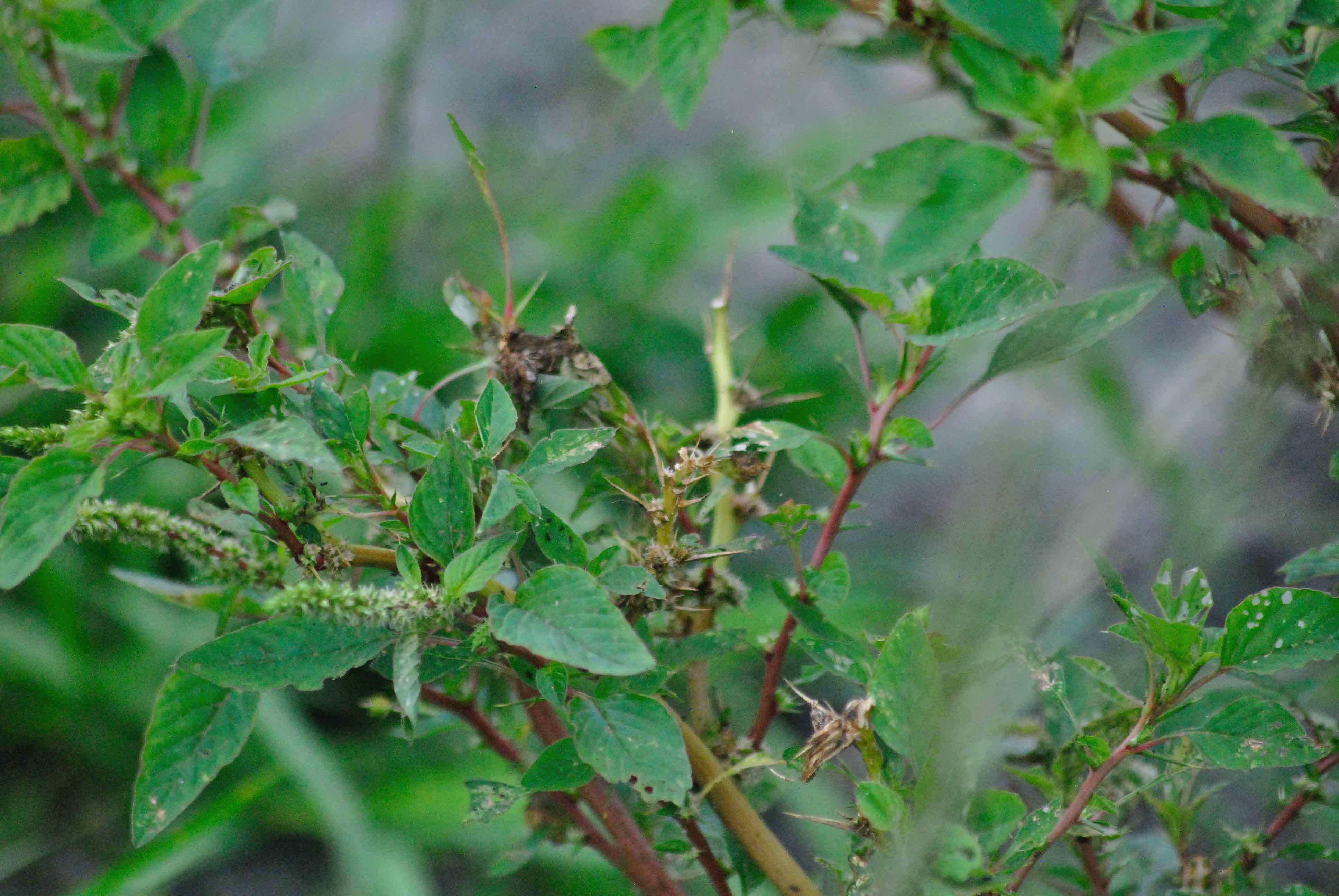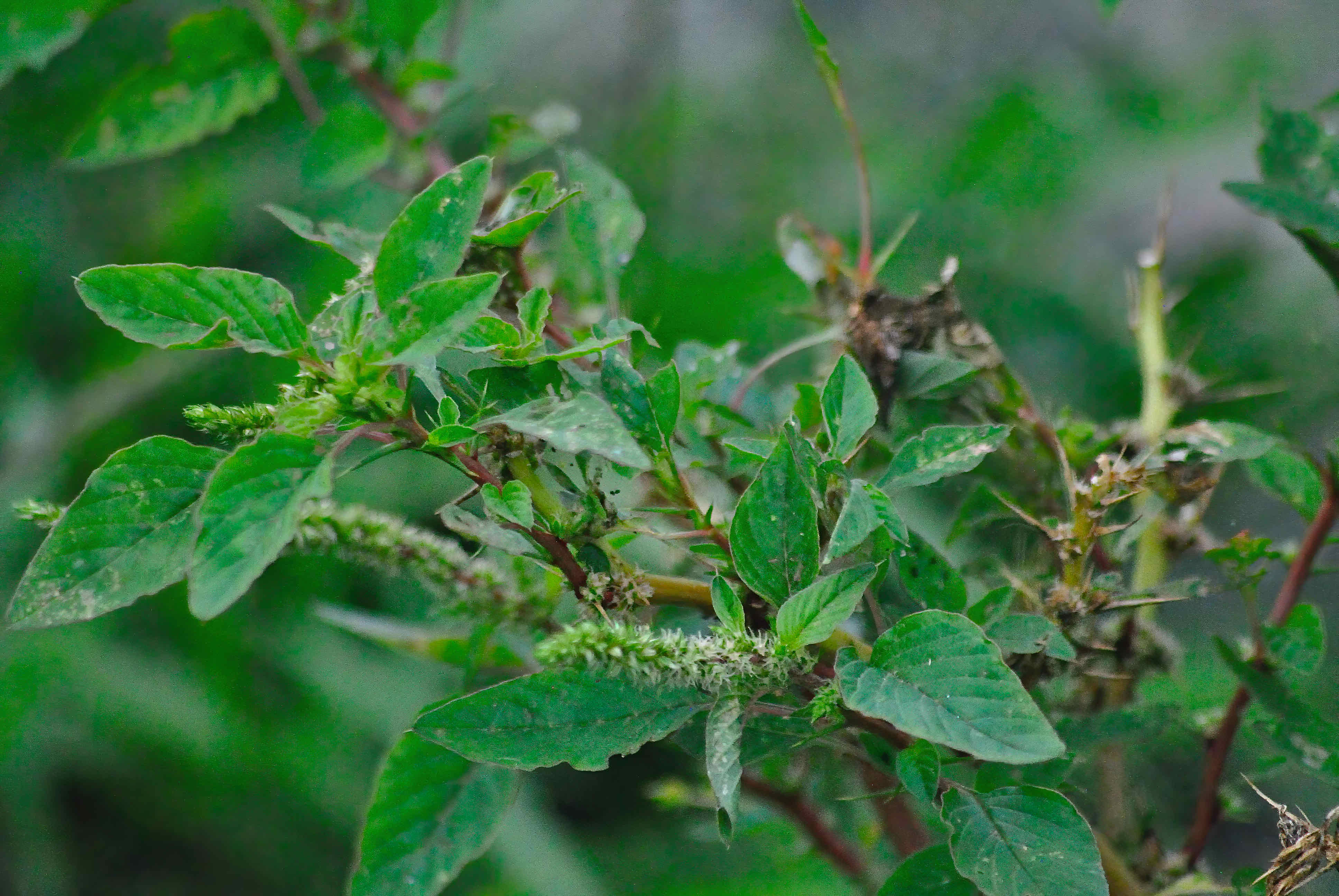
Spiny Amaranth, photographed at Allapattah Flats Wildlife Management Area, Palm City, Martin County, in July 2015.
For most people wandering the wilds of South Florida, spiny amaranth, Amaranthus spinosus, is background noise, a plant easily overlooked because there's nothing drawing attention to it other than those nasty-looking thorns. For farmers, however, it's a pest. For many people around the globe, spiny amaranth is a botanical medicine cabinet, a plant used to treat a variety of ailments including hemorrhoids and cancers.
It's widespread throughout North America roughly from Manitoba to Texas, east to the Atlantic Coast, with California thrown in for good measure.
It's found in most of Florida, but whether it's native or not is a matter of debate. Delray Beach-based Institute for Regional Conservation says no, that it probably originates in tropical parts of Central and South America. The U.S. Department of Agriculture, on the other hand gives it a thumbs up as native to the continental United States.
Spiny Amaranth also grows pretty much around the globe, in tropical and temperate places in Asia, Africa and the Pacific. It's found in waste areas — dumps — in disturbed areas like roadsides, in pastures and in farmers' fields, where it can be a major agricultural pest.
Spiny amaranth is a bushy plant, generally erect, with thick stems that range in color from green to red to purple. Along the length of the stems are pairs of sharp, needle-like spines. It is the only member of the amaranth family to have spines — which make it easy to identify the plant. Spiny amaranth produces large numbers of tiny, green-white flowers that lack petals along with any kind of charm. They do produce tons of seed-like fruit that are an important source of food for birds.
On the other hand, the plant itself is full of nitrates, which can poison livestock. In 1973, 39 dairy cows died after eating chopped sorghum mixed with spiny amaranth. The cause of death: nitrate poisoning.
The seeds are able to remain viable for long periods of time; in fact, some require months before germinating. They are designed to be transported by wind and by water, which is probably how it's managed to travel the world.
As we noted earlier, spiny amaranth is an important component in traditional medicine pretty much everywhere it's found. The Cherokee, for example, used it along with green corn to make a drug used in certain ceremonies. They also used the leaves to stop heavy menstrual bleeding.
In fact, its use as an astringent — an agent that stops bleeding — is common around the world. It's also used as an anti-inflammatory drug, expectorant, to break fevers and improve appetites. In the Philippines, the leaves are used to treat insect bites, the roots to treat snakebites. In China, Ghana and India it's used to relieve hemorrhoids. In Mauritius, Java and southeast Asia, it's used to fight cancer.
Spiny amaranth is a member of Amaranthaceae, the amaranth family. Other common names include thorny amaranth and spiny pigweed.



